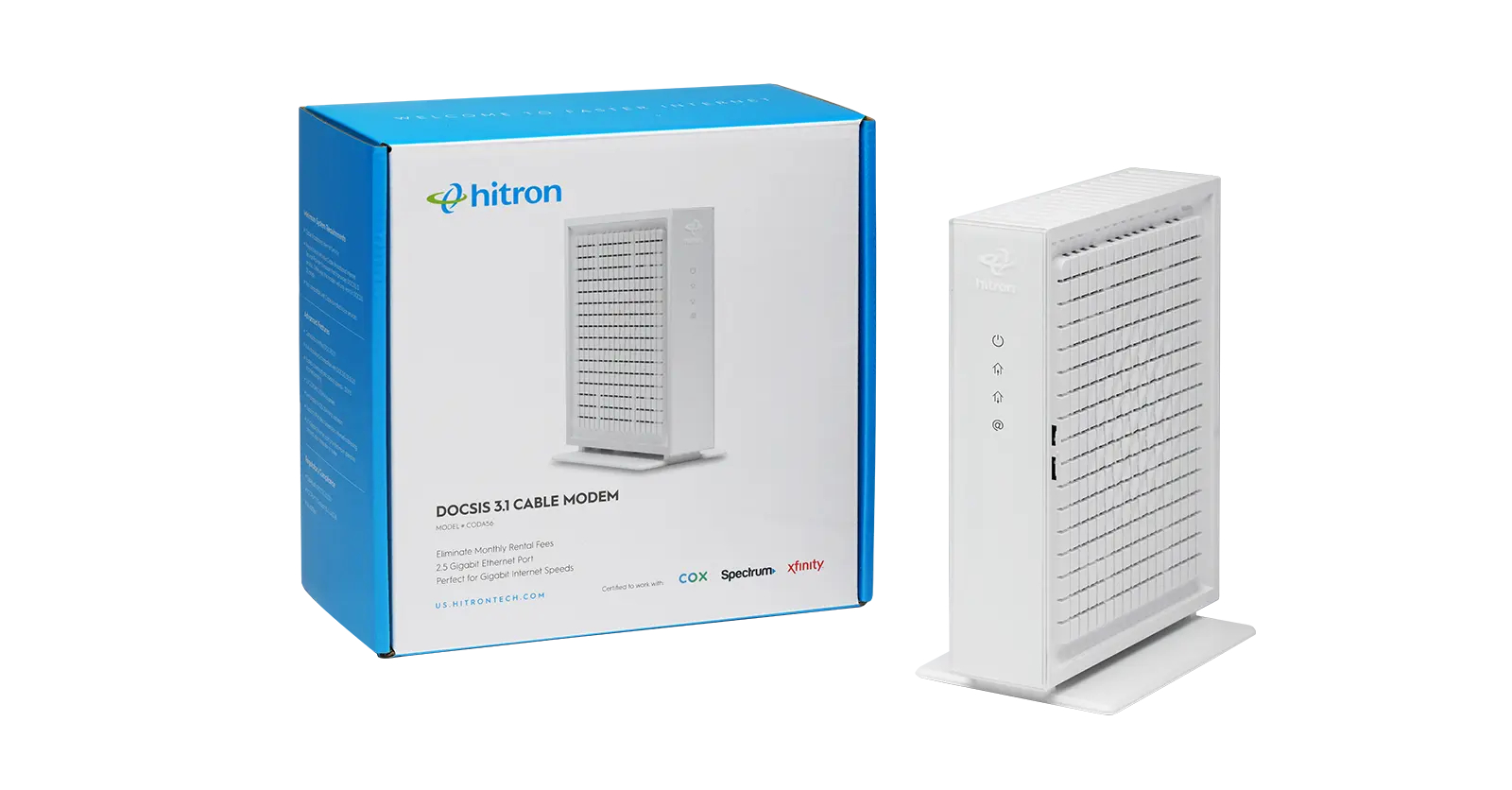If you have cable Internet, which is broadband from your Internet service provider (ISP) that uses coaxial cables to deliver bandwidth, then you have a DOCSIS cable modem.
DOCSIS stands for Data Over Cable Service Interface Specification. It’s a cable technology standard from CableLabs research and development consortium within the cable television Industry that provides standards for certification and interoperability standards. Understanding the DOCSIS standard is an important feature to know because it influences which modem you should get for a cable Internet connection.
The biggest difference between DOCSIS 3.0 and 3.1 is that DOCSIS 3.1 technology can support download speeds 10 times faster than DOCSIS 3.0, up to 10Gbps. But there’s more to it, so keep reading.
How Important is your Cable Modem?
Simply put, a cable modem connects you to the Internet. It acts as a digital translator between your ISP’s network and your home connection. Simply put, your cable modem is what connects you to your Cable Internet providers’ Internet connection, and, because of this, it plays a significant role in delivering your Internet speeds into your home.
The most important specs to pay attention to with cable modems are DOCSIS standards (cable modem technology) and channel bonding.
Cable Modem Technology
Cable modem technology evolves quickly, and having an older cable modem that can no longer support the advances in technology and Internet speeds offered by your ISP is holding your Internet performance back.
Newer cable modem technology, such as DOCSIS 3.1, offers faster speeds and improved performance. If your modem or cable modem is older than 4 years old, it’s likely time to upgrade to a DOCSIS 3.1 cable modem, the latest cable modem technology.
When you compare DOCSIS 3.0 vs DOCSIS 3.1 technology, your older DOCSIS 3.0 cable modem is only capable of delivering speeds from your ISP up to 1 Gbps, while a DOCSIS 3.1 cable modem is capable of delivering speeds up to 10 Gbps!
What is DOCSIS?
DOCSIS is the interface standard technology that determines how a cable modem receives Internet signals from your cable ISP (such as from providers like Spectrum or Xfinity) and translates them into the Internet service you use in your home to surf the web, stream TV shows, online gaming, and more.
The version of DOCSIS technology used by your ISP also sets the foundation for how your input is translated into data that the Internet outside your home can understand.
Over time, the standards have evolved with technology:
Evolution of DOCSIS Technology:
DOCSIS 2.0
DOCSIS 3.0
DOCSIS 3.1
The Difference Between DOCSIS 3.0 & 3.1
There are significant differences between DOCSIS 3.0 and 3.1 technologies. The top differences being speeds, security, performance, pricing, and availability.
We created a chart below showing the differences in technical features between DOCSIS 3.0 and DOCSIS 3.1. DOCSIS 3.1 provides greater speed improvements, more advanced security and technology improvements and greater performance for your cable modem.
DOCSIS 3.0 vs DOCSIS 3.1
DOCSIS 3.0
DOCSIS 3.1
DOCSIS 3.1 Modem Advantages
• Speed: DOCSIS 3.1 cable modems support 10X faster speeds, up to 10 Gbps, more than DOCSIS 3.0 modems. A DOCSIS 3.1 modem will support your speed plans today and tomorrow, future-proofing your Internet connection to handle those faster speed plans when available to you.
• Security: DOCSIS 3.1 modems have advanced security features and offer the best online security.
• Long-term use: DOCSIS 3.1 modems are the best for a long-term-use option.
Choosing the Right Cable Modem
The DOCSIS 3.1 standard has increased how quickly information travels from your ISP to your home and back, amongst other improvements:
Increased Downstream and Upstream – DOCSIS 3.1 is designed to enable higher downstream and upstream rates to accommodate the growing bandwidth capacity for 4K video, online gaming, video conferencing and much more.
Advanced Technology – DOCSIS 3.1 offers higher orders of modulation, better forward error correction and the elimination of guard bands, which translates into a stable, reliable, faster and the most up to date technology available today.
Handles Higher Speeds – a DOCSIS 3.1 modem is the best for high-speed Internet plans to harness performance and reliability. You’ll may have to pay more for a DOCSIS 3.1 modem, but you’re getting faster speeds that will let you enjoy those premium services from your ISP.
Choosing the right cable modem for you comes down to this:
- Compatibility with your Cable Internet provider (ISP)
- Approval of the cable modem by your Cable Internet provider
- Available speed plans from your Cable Internet provider
- Right price for you
The Hitron CODA uses DOCSIS 3.1 to deliver the fastest Multi-Gigabit speeds to all of your connected devices. Hitron’s CODA DOCSIS 3.1 Cable Modem is approved and compatible with Comcast XFINITY and Charter Spectrum (more approvals pending) and is available on Amazon. Learn more about cable modems or cable modem routers by reading Hitron’s Learn Page.
